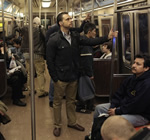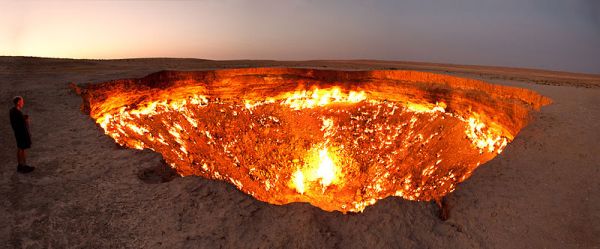
Portrait
Carolina Naturally is read in 191 countries around the world daily.
Today is National Ask An Atheist Day
Don't forget to visit our sister blog!

| 310 | St. Eusebius begins his reign as Catholic Pope. | |
| 1521 | Martin Luther confronts the emperor Charles V, refusing to retract the views which led to his excommunication. | |
| 1676 | Sudbury, Massachusetts is attacked by Indians. | |
| 1775 | American revolutionaries Paul Revere and William Dawes ride though the towns of Massachusetts warning that "the British are coming." | |
| 1791 | National Guardsmen prevent Louis XVI and his family from leaving Paris. | |
| 1818 | A regiment of Indians and blacks is defeated at the Battle of Suwanna, in Florida, ending the first Seminole War. | |
| 1834 | William Lamb becomes prime minister of England. | |
| 1838 | The Wilkes' expedition to the South Pole sets sail. | |
| 1847 | U.S. forces defeat Mexicans at Cerro Gordo in one of the bloodiest battle of the war. | |
| 1853 | The first train in Asia begins running from Bombay to Tanna. | |
| 1861 | Colonel Robert E. Lee turns down an offer to command the Union armies. | |
| 1885 | The Sino-Japanese war ends. | |
| 1906 | A massive earthquake hits San Francisco, measuring 8.25 on the Richter scale. | |
| 1923 | Yankee Stadium opens with Babe Ruth hitting a three-run homer as the Yankees beat the Red Sox 4-1. | |
| 1937 | Leon Trotsky calls for the overthrow of Soviet leader Josef Stalin. | |
| 1942 | James H. Doolittle bombs Tokyo and other Japanese cities. | |
| 1943 | Traveling in a bomber, Japanese Admiral Isoroku Yamamoto, the mastermind of the attack on Pearl Harbor, is shot down by American P-38 fighters. | |
| 1946 | The League of Nations dissolves. | |
| 1949 | The Republic of Ireland withdraws from British Commonwealth. | |
| 1950 | The first transatlantic jet passenger trip is completed. | |
| 1954 | Colonel Nasser seizes power in Egypt. | |
| 1978 | The U.S. Senate approves the transfer of the Panama Canal to Panama. | |
| 1980 | Zimbabwe's (Rhodesia) formal independence from Britain is proclaimed. | |
| 1983 | A suicide bomber kills U.S. Marines at the U.S. Embassy in Lebanon. |
A twenty-year-old man who had been watching the Boston Marathon had his body torn into by the force of a bomb. He wasn’t alone; a hundred and seventy-six people were injured. But he was the only one who, while in the hospital being treated for his wounds, had his apartment searched in “a startling show of force,” as his fellow-tenants described it to the Boston Herald, with a “phalanx” of officers and agents and two K9 units.
This is the ugly truth of the legal system: litigants and lawyers can manipulate it to impose huge expense on defendants no matter what the merits of their complaint. Censors can abuse the system to make true speech so expensive and risky that citizens will be silenced. Regrettably, Ohio does not have an anti-SLAPP statute, so Med Express and James Amodio can behave in this matter with relative impunity. If Ms. Nicholls has to incur ruinous legal expenses to vindicate her rights, the bad guys win, whatever the ultimate outcome of the case.
Unless, that is, you will help Amy Nicholls stand up — not for $1.44, but for the freedom to speak the truth without being abused by a broken legal system.
If you are an attorney practicing in Medina County, Ohio, please consider offering pro bono assistance. Mr. Levy will be coordinating assistance, and I can tell you from personal experience that it is a privilege to work with him. Help give Med Express and James Amodio the legal curb-stomping they so richly deserve. Justice, karma, and the esteem of free speech supporters everywhere will be your reward.
If you aren't an attorney, you can help, too. Med Express should not be permitted to act in this manner without consequence. The natural and probable consequence is widespread publication of their conduct. Help by publicizing the case on Facebook, Twitter, on your blog, on forums, and on every other venue available to you. Ask yourself — would you want to do business with a company that abuses the legal system to extract revenge against customers who leave truthful negative feedback?
This blind spot is of particular significance during an age when oligopolies, not monopolies, rule. Consider Barry Lynn’s 2011 book, “Cornered,” which carefully detailed the rising concentration and consolidation of nearly every American industry since the nineteen-eighties. He found that dominance by two or three firms “is not the exception in the United States, but increasingly the rule.” Consumers, easily misled by product labeling, often don’t even notice that products like sunglasses, pet food, or numerous others come from just a few giants. For example, while drugstores seem to offer unlimited choices in toothpaste, just two firms, Procter & Gamble and Colgate-Palmolive, control more than eighty per cent of the market (including seemingly independent brands like Tom’s of Maine).
The press confuses oligopoly and monopoly with some regularity. The Atlantic ran a recent infographic titled “The Return of the Monopoly,” describing rising concentration in airlines, grocery sales, music, and other industries. With the exception of Intel in computer chips, none of the industries described, however, was actually a monopoly—all were oligopolies. So while The Atlantic is right about what’s happening, it sounds the wrong alarm. We know how to fight monopolies, but few seem riled at “The Return of the Oligopoly.”
Things were not always thus. Back in the mid-century, the Justice Department went after oligopolistic cartels in the tobacco industry and Hollywood with the same vigor it chased Standard Oil, the quintessential monopoly trust. In the late nineteen-seventies, another high point of enforcement, oligopolies were investigated by the Federal Trade Commission, and during that era Richard Posner, then a professor at Stanford Law School, went as far as to argue that when firms maintain the same prices, even without a smoke-filled-room agreement, they ought to be considered members of a price-fixing conspiracy. (By this logic, the Delta and US Airways shuttles between New York and Washington, D.C., would probably be price-fixers, since their prices do vary by how far in advance you buy, but are always identical.)

 Do
you stand or sit down in a crowded subway train? Give up your seat to
a pregnant woman or an elderly or do you pretend not to notice?
Do
you stand or sit down in a crowded subway train? Give up your seat to
a pregnant woman or an elderly or do you pretend not to notice?Some of the findings might seem intuitive to the veteran subway rider, even if the rationale is not.Matt Flegenheimer of The New York Times has the post: Here.
When a subway car has more passengers than seats, the study found that an average of 10 percent or more of the seats were not taken. And even when a subway car is less than half-filled, the authors found that a small percentage of riders would inevitably choose to stand.
Riders prefer seats near a door, the authors said, and demonstrate “disdain for bench spots between two other seats.” Those who stand also prefer to do so near doors, in part because of its many “partitions to lean against,” and for the precious seconds they save getting off the train.
But the doorway area was desirable for a less obvious reason, too, the report found; it allowed riders to avoid “the sometimes uncomfortable feeling of accidentally making eye contact with seated passengers.”
The snapshots combine to sketch a transit landscape of convenience, game theory and occasional altruism, where often every movement is executed with purpose.

... new research suggests men really do struggle to read women's emotions — at least from their eyes.Tia Ghose of LiveScience summarizes it for us: Here.
The research, published Wednesday (April 10) in the journal PLOS ONE, showed that men had twice as much trouble deciphering women's emotions from images of their eyes compared with those of men. Parts of the male brain tied to emotion also didn't activate as strongly when the men looked at women's eyes.


“Even though elite graduates are more likely to earn advanced degrees, marry at later ages and have higher expected earnings, they are still opting out of full-time work at much higher rates than other graduates, especially if they have children,” said Hersch.But why? Hersch doesn't think it's because these women are being forced out: More
Hersch’s research finds that 60 percent of female graduates from elite colleges are working full time compared to 68 percent of women from other schools. [...]
Hersch found that when comparing graduates from elite and less selective schools, the largest gap in full-time labor market activity is among women who also earned a master’s in business degree.
“Married MBA mothers with a bachelor’s degree from the most selective schools are 30 percentage points less likely to be employed full time than are graduates of less selective schools,” said Hersch.

 Forget
mascaras! To properly beautify your eye, you'd need to shave it. Here's
the bizarre ancient Chinese art of eyeball cleaning:
Forget
mascaras! To properly beautify your eye, you'd need to shave it. Here's
the bizarre ancient Chinese art of eyeball cleaning:The bizarre practice is dying out in China, but customers can still get the traditional treatment from the Mr Deyuan, who has been offering the service from his stand in a park in Chengdu city, Sichuan province, for the past seven years.The Daily Mail has more pics that you should NOT see if you're squeamish about those sorts of things: Here.
After holding the eye open and running his blade across the surface of the eyeball, the barber then inserts a small rod beneath the upper and lower lids and scrapes it back and forth.
Mr Deyuan will provide a head and face shave plus an eye cleaning for RMB5 - the equivalent of around 50 pence.
















In May 2012, when the renowned Wilshire Grand Hotel in Los Angeles was slated to close its doors for good, the owners ran a huge liquidation sale—the entire contents of the hotel went up for grabs. The hotel changed hands over the years, originally the Statler—then Statler-Hilton, then Omni, and finally the Wilshire Grand— remained one of the “see and be-seen” hotspots of the midcentury atomic age.
During the clearance sale, a puzzling discovery was made: a fifteen-foot mosaic mural commissioned by The Los Angeles Petroleum Club was found behind some old wood paneling. The Club had at one time maintained a posh member’s suite at the hotel. This is where the intrigue and mosaic sleuthing begins.

 Pine marten survey suggests recovery
Pine marten survey suggests recovery
